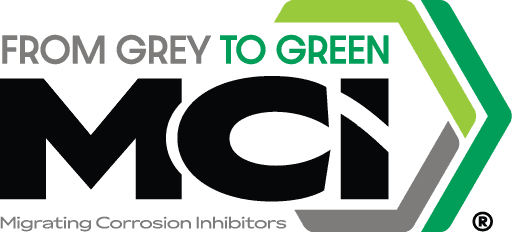NEWS ALERT: MCI®-2061 Test Demo Builds Confidence in ‘Green’ Cleaner for Oil-Stained Concrete
June 2, 2021
There are always plenty of reasons and opportunities to remove gas and oil stains from concrete. For instance, concrete driveways, garages, and bridges are often the victims of vehicle gas and oil leaks. In addition to dealing with the bad appearance, contractors must make sure concrete surfaces are thoroughly clean and free of all contaminants before applying a waterproofing membrane. A recent test demonstrates MCI®-2061 in action under the microscope and builds confidence in this “green” cleaning product for concrete oil stains.
How Green Cleaners Work
MCI®-2061 works by a dual mechanism. Biodegradable surfactants disperse oil droplets and perform the initial cleaning. If properly applied, MCI®-2061 spores then germinate into active microorganisms and perform secondary cleaning by actually digesting hydrocarbons. This activity increases as time goes on. In fact, spores that remain in the substrate after rinsing may continue to degrade residual hydrocarbons that were not removed in the initial cleaning process.
MCI®-2061 Efficacy Demonstration
To demonstrate surfactants and microorganisms at work in MCI®-2061, the product is typically applied to a small area, and before-and-after results are compared to validate the cleaning efficacy. However, the easiest and fastest way to show decomposition of organic matter is to measure COD (chemical oxygen demand) reduction in a sample. To demonstrate this, three samples of MCI®-2061 were prepared for testing of biodiesel digestion. All samples were diluted with water at a ratio of 1:100 and were also examined under the microscope.
Sample #1 (control) – MCI®-2061 without bacteria or biodiesel
Sample #2 (control) – MCI®-2061 without bacteria but with biodiesel added
Sample #3 – MCI®-2061 with bacteria and biodiesel
| Sample ID | COD t=0 (mg/L) | COD t=1 week (mg/L) | COD reduction (mg/L) | COD Reduction % |
| MCI®-2061 NB Control | 17,040 | 17,760 | 720 | +4.23% |
| MCI®-2061 NB | 22,780 | 23,080 | 300 | +1.32% |
| MCI®-2061 | 21,760 | 13,900 | -7860 | -36.12% |
COD, a measure of contaminants in the solution, dropped by 36.12% over this timeframe, while COD increased slightly in the two control samples not seeded with bacteria.
For a PDF version please click here.
CASE HISTORY SPOTLIGHT: Case History #697: Concrete Oil Stain Cleanup at Golf Course
August 23, 2022
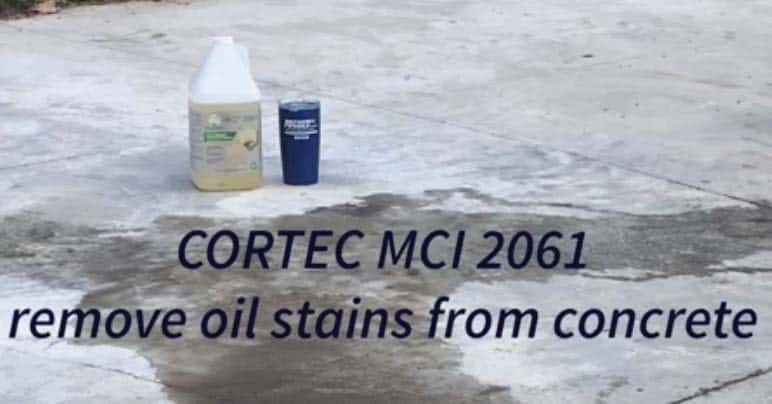
A golf course owner wanted to clean up significant hydrocarbon oil stains on an outdoor concrete pad used to park equipment and machinery. MCI®-2061 concentrate was applied and brushed into the concrete. Water was used to activate microorganisms, and the “green” cleaning product was left overnight to allow biodegradation to occur. Treated areas were rinsed with water the next day. The customer was extremely happy with the results and the fact that MCI®-2061 was so easy to use as an alternative to blast cleaning.
To read the full case history, please visit: https://www.corteccasehistories.com/?s2member_file_download=access-s2member-level1/ch697.pdf
Keywords: concrete oil stain cleanup, case history spotlight, Cortec, MCI, alternative to blast cleaning, green cleaning products, oil stain cleanup, concrete cleanup, From Grey to Green
For a PDF version please click here.
PRESS RELEASE: MCI® Technology: An Important Key to Sustainable Construction
August 22, 2022
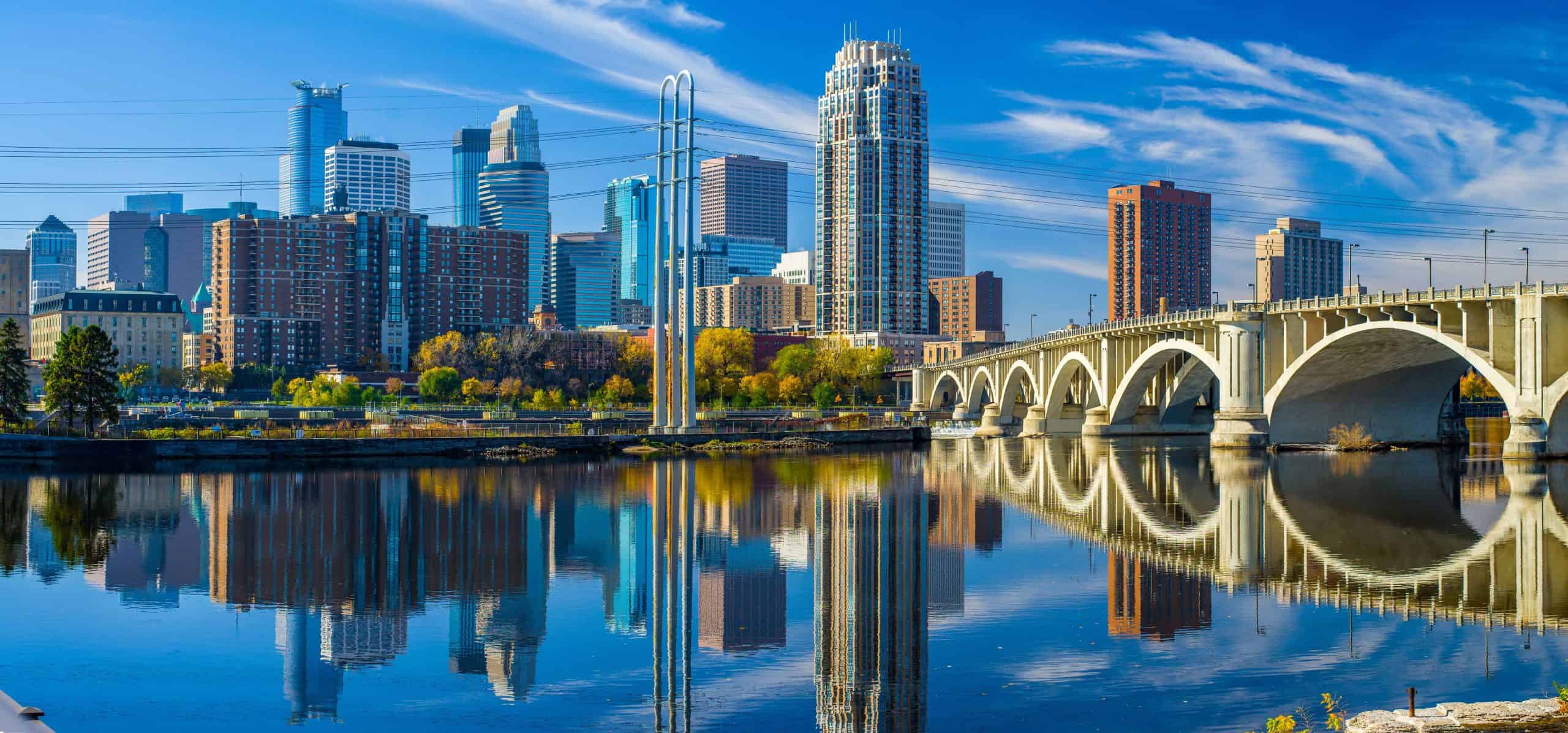
When it comes to sustainability, the most important thing Cortec® MCI® Technology can do is to help extend the service life of reinforced concrete structures by mitigating corrosion. Because concrete is a major producer of greenhouse gas, the very act of helping concrete last longer means less new concrete is needed to replace the old concrete, thus reducing overall CO2 output from cement production. Furthermore, MCI® helps contractors and building owners steward resources wisely by repurposing existing structures and sometimes even using renewable materials for construction.
Challenges to Concrete Service Life
To understand MCI’s impact on sustainability, it is necessary to look at one of the major challenges to concrete longevity: corrosion. The two main sources of corrosion in concrete are chlorides and carbonation. For example, a structure with high chloride exposure from proximity to the sea or frequent exposure to deicing salts is likely to corrode much sooner than a reinforced concrete structure in the middle of a dry, landlocked environment. However, even structures in this latter environment can deteriorate over the years as carbonation sets in from exposure to CO2 in the air. Carbonation reduces the naturally high pH of the concrete so that reinforcement is no longer in the zone of passivity and can corrode more easily. In either case, concrete cracking can make matters worse by allowing corrosives to enter and reach reinforcing steel more quickly.
Helping Concrete Structures Last Longer
MCI® Technology can protect against both types of corrosion by forming a protective molecular layer on the surface of the steel reinforcement. By interfering with the natural corrosion reaction between oxygen, steel, and an electrolyte, MCI® delays time to corrosion and reduces corrosion rates once started. MCI® can be applied as a concrete admixture to new structures or as a surface applied corrosion inhibitor (SACI) to existing structures. It can also be combined with repair mortars or water repellents for dual benefit and application convenience. In this way, both specifying engineers and repair contractors can help their work last longer and be more efficient, reducing the time and labor normally needed for repair. This weighs strongly in favor of earning credits toward LEED certification, a prominent sustainability rating system overseen by the U.S. Green Building Council.
Earning LEED Credits
Earning LEED credits with MCI® can take a two-pronged approach. The main area in which MCI® can help in LEED v4.1 Building Design + Construction is under the credit category of “Building Life-Cycle Impact Reduction,” which looks at “Building and Material Reuse,” as well as the “Whole-Building Life-Cycle Assessment.” By specifying MCI® admixtures in new structures, engineers can reduce the need for concrete repairs and reconstruction to achieve the same service life, thus reducing overall CO2 output over time. In a similar vein, MCI® repair products can help existing structures last longer, thus making it possible to reuse resources that have a high embodied carbon output (carbon emissions from building the structure) instead of demolishing and replacing them. Another way that contractors can earn credits toward LEED certification is by using MCI®-2005, a corrosion inhibiting concrete admixture that protects against both chloride- and carbonation-induced corrosion. MCI®-2005 is a USDA Certified Biobased Product derived from corn. It contains 67% USDA certified biobased content and can contribute to the “Responsible Sourcing of Raw Materials” LEED credit category.
Building for Coastal Resilience
There are many examples of how MCI® has been used in efforts to extend service life by delaying or mitigating corrosion on rusted rebar in concrete. The Lodge at Gulf State Park is an excellent model. Replacing the original lodge that was destroyed by Hurricane Ivan, the new lodge was designed with special goals for sustainability and resilience. A corrosion mitigation strategy was especially important given the corrosive location of the hotel on the Gulf Coast. In addition to MCI®-2005 being a biobased product in line with the project’s overall goal of LEED certification, MCI®-2005 was also shown to outperform the service life of epoxy-coated rebar (intended for corrosion protection) in service life prediction modeling. Furthermore, it provided significant direct cost savings to the project.
Structural Reuse vs. Concrete Demolition
The Höganäs County Water Tower is an excellent example of how MCI® repair materials can be used to restore and prolong the service life of existing structures rather than demolishing them. Although built for a service life of 50 years, the water tower was already deteriorating at age 42, with chunks of concrete falling off due to chloride- and carbonation-induced corrosion. The concern was that additional damage could develop quickly and affect structural integrity. The municipality therefore requested a repair strategy that would provide 20 additional years of service life. The project owners settled on a repair plan that included MCI®-2020 V/O for corrosion mitigation over other proposals that had a shorter expected service life or required demolition.
Meeting Longer Service Life Demands
The sustainability trend is evidenced in the fact that more and more projects are demanding structural service lives of 100 years or more. This is the case of the new Pelješac Bridge, which creates an important link between two separate parts of Croatia. The bridge was designed to have a 130-year service life and therefore incorporated multiple corrosion mitigation strategies to counteract concrete corrosion in the harsh saltwater environment. One of these strategies was the application of MCI®-2018 onto the concrete pylons. This supplied the concrete surfaces with a 100% silane water repellent (to block intrusion of corrosives) and Migrating Corrosion Inhibitors to penetrate and protect embedded steel reinforcement.
An Important Key to Sustainable Construction
The need for concrete corrosion solutions will only get stronger as service life demands increase and sustainability requirements get stricter. MCI® Technology provides a convenient, efficient, and effective method of corrosion protection for both new and existing structures, providing an important key to sustainable construction and the long-term reduction of one’s carbon footprint. Contact Cortec® to learn more about MCI® and sustainable construction: https://www.cortecmci.com/contact-us/
Keywords: extend service life, From Grey to Green, sustainable construction, Cortec MCI, LEED credits, sustainability, concrete admixture, concrete corrosion, carbon footprint, rusted rebar in concrete
Need a High-Resolution Photo? Visit: www.cortecadvertising.com
Cortec® Corporation is the global leader in innovative, environmentally responsible VpCI® and MCI® corrosion control technologies for Packaging, Metalworking, Construction, Electronics, Water Treatment, Oil & Gas, and other industries. Our relentless dedication to sustainability, quality, service, and support is unmatched in the industry. Headquartered in St. Paul, Minnesota, Cortec® manufactures over 400 products distributed worldwide. ISO 9001:2015, ISO 14001:2015, & ISO/IEC 17025:2017 certified. Cortec® Website: http://www.cortecvci.com Phone: 1-800-426-7832 FAX: (651) 429-1122
For a PDF version please click here.
CASE HISTORY SPOTLIGHT: Case History #253: Condo Balcony Repair
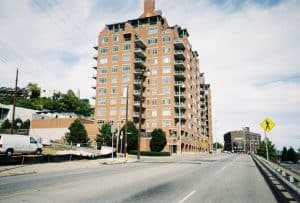
As part of a balcony repair project, a condominium complex in Cincinnati needed overhead patching and caulking followed by a sealer. Cortec® MCI®-2019 was chosen for the latter as a two-in-one Migrating Corrosion Inhibitor™ / water repellent that could be applied in one step. The condominium owner ultimately expressed satisfaction with the application and performance of MCI®-2019 during the project.
To read the full case history, please visit:
Keywords: balcony repair, corrosion inhibitor, water repellent, MCI-2019, Migrating Corrosion Inhibitors, Cortec, condominium repair
Read the full case history here. (login required)
For a PDF version please click here.
MCI® Technology Applied on Peljesac Bridge featured in Building Design & Construction
MCI® Technology Applied on One of the World’s Most Demanding Construction Projects Featured in Building Review Journal
NEWS ALERT: Fighting Concrete Corrosion in Water Treatment Facilities for Greater Sustainability
August 17, 2022
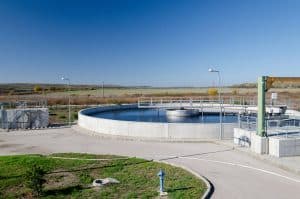
Water and wastewater treatment facilities are part of the critical infrastructure that makes our lives better on a daily basis, but often does not get a second thought. Nevertheless, the longevity of these structures not only impacts our municipal budgets but can also affect our long-term carbon footprint, since concrete production is among the largest contributors to anthropogenic greenhouse gas emissions. Specifying Migrating Corrosion Inhibitors (MCI®) into the concrete structural design can promote a more sustainable future by reducing the need for early replacement of high carbon-cost, energy-intensive reinforced concrete in drinking water reservoirs, desalination plants, and wastewater facilities.
Drinking Water Reservoirs and Pumping Systems
The first of these environments is the least corrosive. However, concrete drinking water reservoirs, piping, or pumping stations can still experience challenges from high exposure to moisture or due to long-term carbonation. One water consortium in Europe knew from experience that their structures were prone to corrosion and took care to minimize future damage by incorporating MCI®-2005 admixture into a new reservoir and water regulating tank. This concrete admixture is certified to meet ANSI/NSF Standard 61 for use in large potable water structures and so was a great corrosion inhibiting alternative to calcium nitrites, which are not certified in this way. Another product certified to meet NSF Standard 61 is MCI®-2020, which can be used for maintenance and corrosion mitigation on existing drinking water structures where carbonation may have set in.
Desalination Plants
Desalination plants are much more corrosive due to inevitable exposure to saltwater and brine. This is a built-in recipe for corrosion disaster. It is therefore imperative for desalination engineers to specify corrosion protection into the system in order to fight this ever-present challenge. The Sorek Desalination Plant is a great example of how and where MCI® can be used to fight desalination plant corrosion. MCI®-2005 was added along with a waterproofing admixture to both filtration bins and prefab concrete pipe segments. MCI®-2005 was also admixed into brine water reservoirs, where water likely reaches its peak chloride concentration. Furthermore, MCI®-2020 surface applied corrosion inhibitor (SACI) was used to compensate for low concrete cover in some desalinated water reservoirs. At least seven years later, no corrosion related issues had been reported.
Wastewater Treatment Plants and Pumping Stations
Last, but not least, wastewater treatment plants are among the most corrosive of these environments due to the high concentration of H2S and other contaminants present in the waste materials. Clarifiers, aeration tanks, secondary treatment bins, walkways, and pumping stations are often made of reinforced concrete and exposed to corrosive chemicals. The best plan is to specify MCI®-2005 or MCI®-2005 NS as a corrosion inhibiting admixture when the tanks or facilities are first poured. MCI®-2026 can be topically applied at any stage as a tough barrier in tanks or high traffic areas because of its outstanding resistance to chemicals and abrasion.
Promote Economic and Environmental Sustainability The presence of water, chlorides, and/or chemicals naturally adds to the risk of reinforced concrete corrosion. By taking advantage of a few key MCI® materials, facility designers and owners can raise the probability of extending service life for greater economic and environmental sustainability. Contact Cortec® for advice on your facility:
https://www.cortecmci.com/contact-us/
Keywords: sustainability, MCI, From Grey to Green, corrosion protection, concrete corrosion, concrete admixtures, carbon footprint, contributors to greenhouse gas emissions, wastewater treatment, extending service life
FEATURED IN: MCI-2039 High Performance Horizontal Repair Mortar featured in For Construction Pros Online
PRESS RELEASE: Value Engineering with MCI®-2019 for Concrete Maintenance and Repair
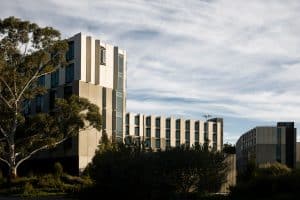
The concept of value engineering is not only for the construction phase. It is also a useful practice during the maintenance and repair stages of existing reinforced concrete structures, ensuring projects get done within budget. True value engineering saves money without reducing service life or affecting the quality of construction or materials. Ideally, it adds value to the project. MCI®-2019 is one such value engineering solution to take advantage of when seeking to extend the service life of existing concrete structures.
The Benefit of MCI® Water Repellents
MCI®-2019 is a 40% silane, solvent-based concrete water repellent containing Migrating Corrosion Inhibitors. The small molecules of MCI®-2019 can easily penetrate into concrete, providing water repellency by chemically reacting with cementitious substrates under proper application. MCI®-2019 seals surface pores, which prevents intrusion of chloride and carbonation and protects from the ingress of wind driven rain. Treated areas retain their original appearance and are breathable. MCI®-2019 is an excellent option both as the finishing touch on a concrete repair (where no membrane or coating system is used) and for periodic maintenance every 7-10 years. Since MCI®-2019 increases service life, it can ultimately reduce the use of repair or reconstruction materials, thus contributing to sustainability.
Coping with Silane Shortages
One of the big challenges for the construction industry and many others today is the issue of raw material shortages (consequently driving the cost of materials up). For instance, silane supplies are often delayed or difficult to find. Using only a 40% silane relaxes the demand and helps the supply go farther while still providing a significant degree of water repellency. Since MCI®-2019 contains Migrating Corrosion Inhibitors that provide active corrosion protection at the rebar, the need for 100% silane is also not as strong because a dual mechanism is at work to keep corrosives out and resist those that do find their way in.
Cutting Costs
In addition to working around supply chain shortages, MCI®-2019 is also a great way to help cut costs when working on a limited budget. This is especially true with the current combination of supply chain shortages and inflation driving up the price of silane even farther. Using MCI®-2019 saves costs compared to similar alternative systems. It can help a project stay within budget while still offering an excellent source of corrosion protection.
Saving Labor Time and Intensity
Another way MCI®-2019 can save costs is simply by requiring less labor than other water repellents and surface applied corrosion inhibitors (SACIs). Silane wears out and erodes over time, so a good maintenance practice is to reapply it at 7–10-year intervals to maintain concrete water resistance and simultaneously add another dose of SACIs. Usually, workers water-blast the surface to make sure the silane residual is completely cleaned off and then apply a new SACI and a 100% silane water repellent. However, with MCI®– 2019, this may be unnecessary. Workers can save time by applying one or two coats of a two-in-one product and leaving the old silane in place. The silane in MCI®-2019 supplements any residual silane, while Migrating Corrosion Inhibitors are still able to penetrate into the concrete. A further advantage is that MCI®– 2019 does not etch, stain, discolor, or otherwise harm glass or aluminum.
Repair of University Towers
In 2015, three 1970’s cast-in-place concrete residence towers at a Midwestern university required repair due to rusted rebar in concrete. After using MCI®-2019 instead of a standard 40% solids silane water repellent post repair, the project’s specifying engineer commented, “MCI®-2019 provided a cost-effective solution in applying both a migrating corrosion inhibitor and a silane sealer in a single product in one application with no resulting color change to concrete façade[s].” The non-etching feature was crucial to the protection of the structure’s new windows, and the parties involved were happy with the ease of MCI®-2019 application.
Be Ready with Multiple Value Engineering Solutions
In today’s market, it is important to have many different value engineering options at one’s fingertips. MCI®-2019 is one that can help engineers and contractors cope with silane shortages and stay within budget all while fortifying concrete with corrosion inhibitors to extend service life. Contact Cortec® to discuss this and other value engineering solutions for your construction and repair projects: https://www.cortecmci.com/contact-us/
Keywords: value engineering, concrete maintenance, concrete repair, extend service life, sustainability, raw material shortage, rusted rebar in concrete, Cortec MCI, From Grey to Green, surface treatment
Need a High-Resolution Photo? Visit: www.cortecadvertising.com
Cortec® Corporation is the global leader in innovative, environmentally responsible VpCI® and MCI® corrosion control technologies for Packaging, Metalworking, Construction, Electronics, Water Treatment, Oil & Gas, and other industries. Our relentless dedication to sustainability, quality, service, and support is unmatched in the industry. Headquartered in St. Paul, Minnesota, Cortec® manufactures over 400 products distributed worldwide. ISO 9001:2015, ISO 14001:2015, & ISO/IEC 17025:2017 certified. Cortec® Website: https://www.cortecvci.com Phone: 1-800-426-7832 FAX: (651) 429-1122
For a PDF version please click here.
